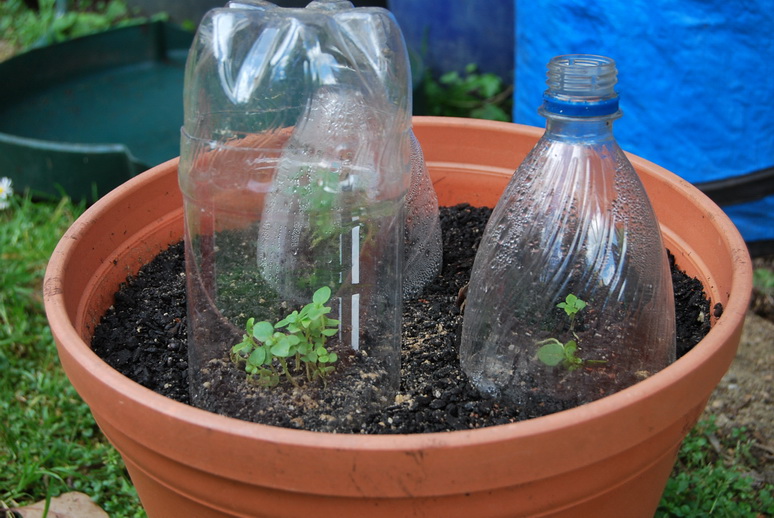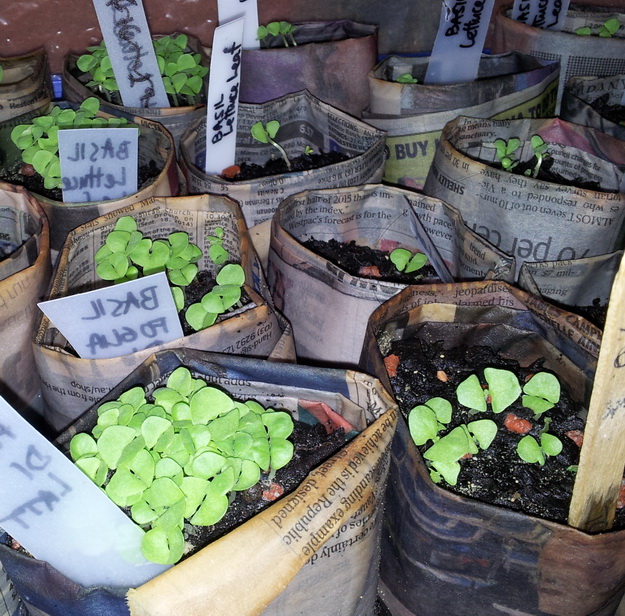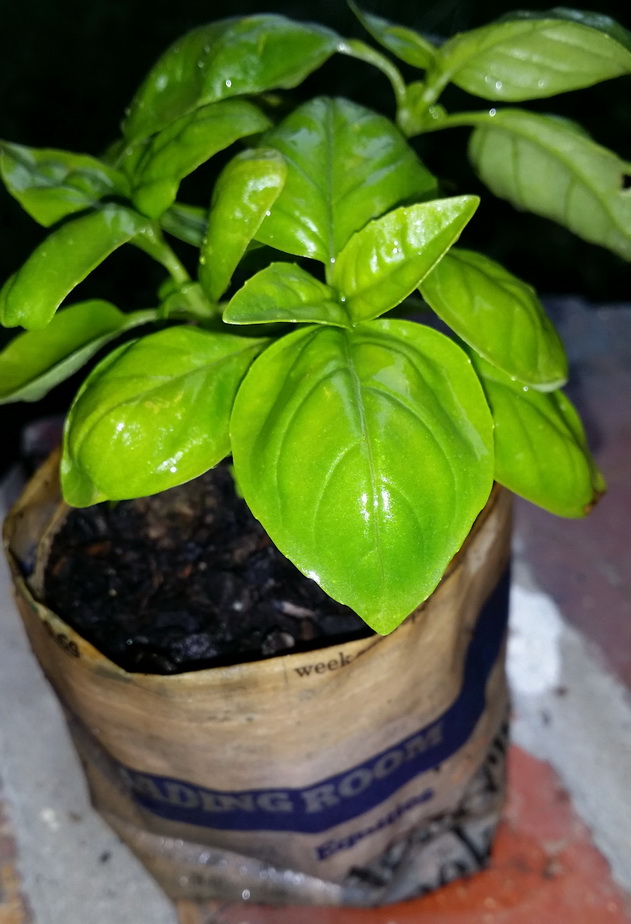Growing BASIL is easy with a few tips and pointers. One important thing about them is that basil seedlings don't transplant happily, so that if you buy a punnet of them and then separate the seedlings to plant them, they will 'sulk' or suffer transplant shock. That's why we plant them in biodegradable pots so that they can get planted pot and all!
Sowing the seeds
Make a newspaper pot. You can make an origami version, or the simple one using a straight-sided jar. Fill it with some good potting mix. If there are any huge chunky bits in the mix you should remove them. Moisten the mix. Sprinkle some seeds lightly over the surface. Gently water them. There is no need to cover them with mix. By watering, they settle in between the bits of the mix.
Position
The seeds need a warm mix to germinate so place your pot with the seeds into a warm place in the house. This might be in a window that gets loads of sunshine, or maybe on top of your fridge. If you place the pot in a clear plastic bag and close it off, it will prevent the soil drying out too quickly, which would kill your emerging seedlings.
Once they germinate or start to grow, you will need to move your new little seedlings and their pot so that they get some sunlight. Take the pot to a sheltered position outside. If it is still very cold at night, you might bring them in and then take them back outside during the day. Don't forget to water them and to help them along, you might water with a weak seaweed solution (eg Seasol) or other liquid organic fertiliser.
Once they start to grow their 'true' leaves you will have to look after them as they will grow more quickly. If the ground is still too cold to plant them outside, keep them in the newspaper pot until the soil warms up. This might be by early November in Melbourne. If you are growing them to keep in a larger pot, you can transplant the basil, newspaper pot and all, into the potting mix of your larger pot.
Protect the young seedlings from snails and earwigs. These pesky pests attack at night-time, so the best option is for you to prevent them getting to your seedlings, by providing a protective cloche, or cover, overnight. This then gets removed in the morning. Until the plants get bigger and more bushy, the pests will continue to attack.
As the plants grow, help to stop them becoming tall and 'leggy' by harvesting some basil and cutting off some stems. New little side branches grow from these points, keeping your basil fresh and tender.
Want more info on growing vegies from seed? Visit 'Success with Seeds'



